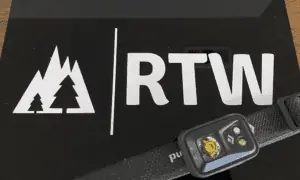What Is A Dispersed Camping Area?

You set your trip dates, hit search, and there is nothing is available.
You’re bummed and frustrated…
Sounds familiar?
Luckily you can still find a great spot to camp for the weekend.
And it’s called dispersed camping.
In this article, we’ll go over what is considered a dispersed camping area, how to find dispersed camping, and what you should know before heading out on your trip.
Let’s begin.
What Is Dispersed Camping?
Dispersed camping, also knowns as remote camping or boondocking, is when you’re camping on undeveloped public land offered by the Bureau of Land Management (BLM) or the United States Forest Service (USFS). These areas are outside of developed campgrounds.
Developed campgrounds are the usual sites that you pay per day and have all the amenities you would typically expect such as:
- Trash bins
- Food lockers
- Access to running water
- Cold/Hot Showers
- Bathrooms
- Picnic Benches
- Designated fire pits
- Electrical outlet for RVs
- Etc
Camping On Public Lands
There are rules that you must follow if you plan to camp on public lands, such as:
- You can’t camp within a quarter-mile of major highway corridors and developed sites
- You must be at least 200 feet away from any water source and historical/archeological sites
Read more on dispersed camping rules and regulations from the USDA website.
How Long Can You Camp On Public Lands?
The length of time you can camp on public land will vary depending on the location. Typically, you can disperse camp for up to two weeks with a 28 consecutive day period. However, be sure to check with your local BLM or USFS office for specific regulations in your area.
Now that we know a little more about dispersed camping, let’s look at how to find the perfect spot for your next trip.

How To Find Dispersed Camping Areas
The best way to find dispersed camping areas is to use a public lands map. These maps show you all the undeveloped public land in the United States that is available for camping.
The two most popular public land maps are the National Forest Service Interactive Map and the Bureau of Land Management Interactive Map.
Both of these maps allow you to zoom in on specific areas and see what public land is available. Once you find a general area that you want to camp in, be sure to check with the local BLM or USFS office to get specific directions on how to get there.
You’re definitely not confined to just these two resources. Many sites and apps online will offer interactive maps for you to plan your trips accordingly.
What To Bring When Dispersing Camping
When dispersed camping, you are responsible for your own safety and comfort. This means that you need to bring everything you need with you, as there will be no amenities available.
Here is a list of essential items to bring when dispersed camping:
- Water
- Food
- Shelter
- Firewood for campfire pits
- First Aid Kit
- Tools/Repair Kits
- Navigation Tools (map, compass, GPS)
- Communication Device
- Extra Clothing
- Toiletries
- Trash Bags
- Bug Repellent
- Sunscreen
- Portable Camping Toilet
- Solar charger for small electronic devices
Now that you know what dispersed camping is and how to find a spot, let’s go over a few things to keep in mind before heading out on your trip.
1. Make Sure You Have A Camping Permit
Depending on where you are dispersed camping, you may need to get a permit from the local BLM or USFS office. Make sure to check before your trip to avoid any fines.
2. Check The Weather Before You Go
When dispersed camping, you will be in a remote location with no access to amenities. This means that you need to be prepared for whatever Mother Nature throws your way.
Check the weather forecast before you leave and make sure to pack accordingly. Bring extra clothing, food, and water in case of an emergency.
3. Leave No Trace
When dispersed camping, it is important to practice Leave No Trace principles. This means that you should leave the area better than you found it.
Pack out all your trash, bury human waste at least 200 feet away from any water source, and refrain from building new fire pits.
4. Be Bear Aware
If you are dispersed camping in an area that is known for bears, make sure to take the necessary precautions. Store all of your food and toiletries in a bear-proof container and keep it with you at all times.
Never leave food out on your campsite and make sure to clean up any spills immediately.
5. Be Prepared For An Emergency
When dispersed camping, you are responsible for your own safety. This means that you need to be prepared for any emergency that may arise.
Make sure you have a first aid kit, a communication device, and enough food and water for an extended period of time. Know your route before you leave and always let someone know where you are going and when you plan on returning.
Is Dispersed Camping On Public Land Free?
Dispersed camping on public land is free, but you may need to get a campfire permit from the local BLM or USFS office. Check with the local office before your trip to see if a permit is required.
Final Thoughts
There are many benefits to dispersed camping such as solitude, peace, and quiet. However, it is important to be prepared before heading out into the wilderness. Make sure you know the weather forecast and pack enough food and water for your trip. Most importantly, practice Leave No Trace principles when camping or hiking to help preserve our public lands.






